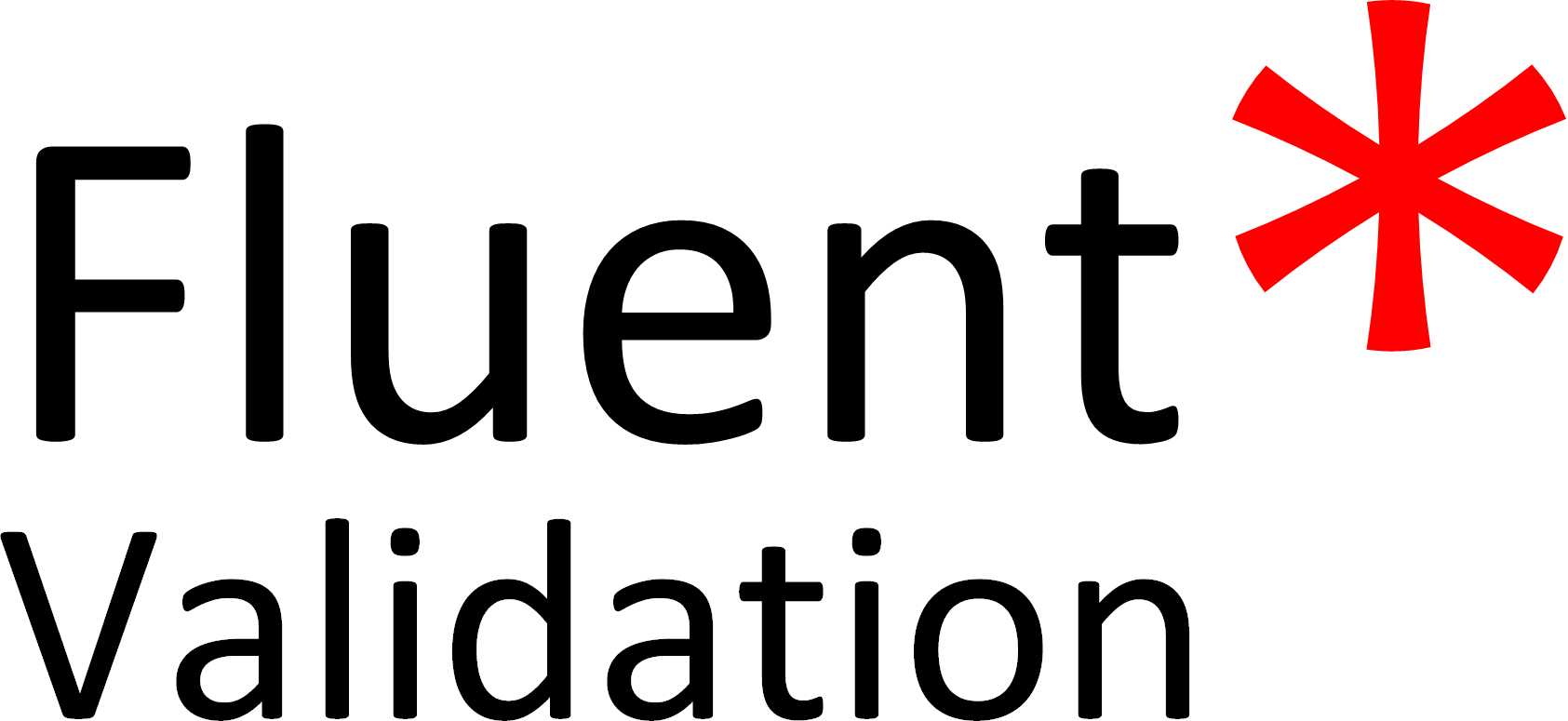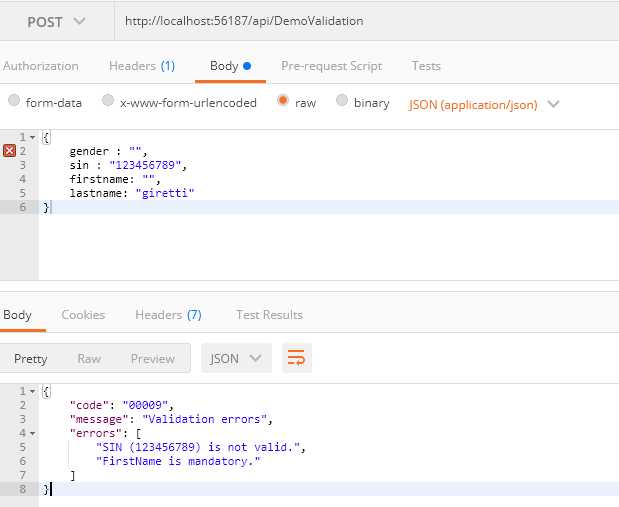ASP.NET Core WebApi中使用FluentValidation验证数据模型
2021-06-18 04:06
标签:singleton 行数据 alt web api 规则 example response 最新 sel 原文链接:Common features in ASP.NET Core 2.1 WebApi: Validation 验证用户输入是一个Web应用中的基本功能。对于生产系统,开发人员通常需要花费大量时间,编写大量的代码来完成这一功能。如果我们使用FluentValidation构建ASP.NET Core Web API,输入验证的任务将比以前容易的多。 FluentValidation是一个非常流行的构建强类型验证规则的.NET库。 我们可以使用Nuget下载最新的 我们需要在 下面我们添加一个 使用 在这个例子中,我们需要验证FirstName, LastName, SIN不能为null, 不能为空。我们也需要验证工卡SIN(Social Insurance Number)编号是合法的 下面我们在 ASP.NET Core 2.1及以上版本中,你可以覆盖ModelState管理的默认行为(ApiBehaviorOptions) 当数据模型验证失败时,程序会执行这段代码。 在这个例子,我设置了如何向客户端显示错误。这里返回结果中,我只是包含了一个错误代码,错误消息以及错误对象列表。 下面让我们看一下最终效果。 这里验证器使用起来非常容易。 你只需要创建一个action, 并将需要验证的数据模型放到action的参数中。 由于验证服务已在配置中添加,因此当请求这个action时, 在本篇博客中,我讲解了如何使用 本篇源代码https://github.com/lamondlu/FluentValidationExample ASP.NET Core WebApi中使用FluentValidation验证数据模型 标签:singleton 行数据 alt web api 规则 example response 最新 sel 原文地址:https://www.cnblogs.com/lwqlun/p/10311945.html
作者:Anthony Giretti
译者:Lamond Lu介绍

配置项目
第一步:下载FluentValidation
FluentValidation库PM> Install-Package FluentValidation.AspNetCore第二步:添加FluentValidation服务
Startup.cs文件中添加FluentValidation服务public void ConfigureServices(IServiceCollection services)
{
// mvc + validating
services.AddMvc()
.SetCompatibilityVersion(CompatibilityVersion.Version_2_1)
.AddFluentValidation();
}添加校验器
FluentValidation提供了多种内置的校验器。在下面的例子中,我们可以看到其中的2种
第一步: 添加一个需要验证的数据模型
User类。public class User
{
public string Gender { get; set; }
public string FirstName { get; set; }
public string LastName { get; set; }
public string SIN { get; set; }
}第二步: 添加校验器类
FluentValidation创建校验器类,校验器类都需要继承自一个抽象类AbstractValidatorpublic class UserValidator : AbstractValidator第三步: 添加验证规则
public static class Utilities
{
public static bool IsValidSIN(int sin)
{
if (sin 999999998) return false;
int checksum = 0;
for (int i = 4; i != 0; i--)
{
checksum += sin % 10;
sin /= 10;
int addend = 2 * (sin % 10);
if (addend >= 10) addend -= 9;
checksum += addend;
sin /= 10;
}
return (checksum + sin) % 10 == 0;
}
}UserValidator类的构造函数中,添加验证规则public class UserValidator : AbstractValidator第四步: 注入验证服务
public void ConfigureServices(IServiceCollection services)
{
// 添加验证器
services.AddSingleton第五步:在
Startup.cs中管理你的验证错误public void ConfigureServices(IServiceCollection services)
{
// Validators
services.AddSingleton使用验证器
FluentValidation将自动验证你的数据模型!第一步:创建一个使用待验证数据模型的action
[Route("api/[controller]")]
[ApiController]
public class DemoValidationController : ControllerBase
{
[HttpPost]
public IActionResult Post(User user)
{
return NoContent();
}
}第二步:使用POSTMAN测试你的action

总结
FluentValidation进行数据模型验证。
文章标题:ASP.NET Core WebApi中使用FluentValidation验证数据模型
文章链接:http://soscw.com/essay/95328.html